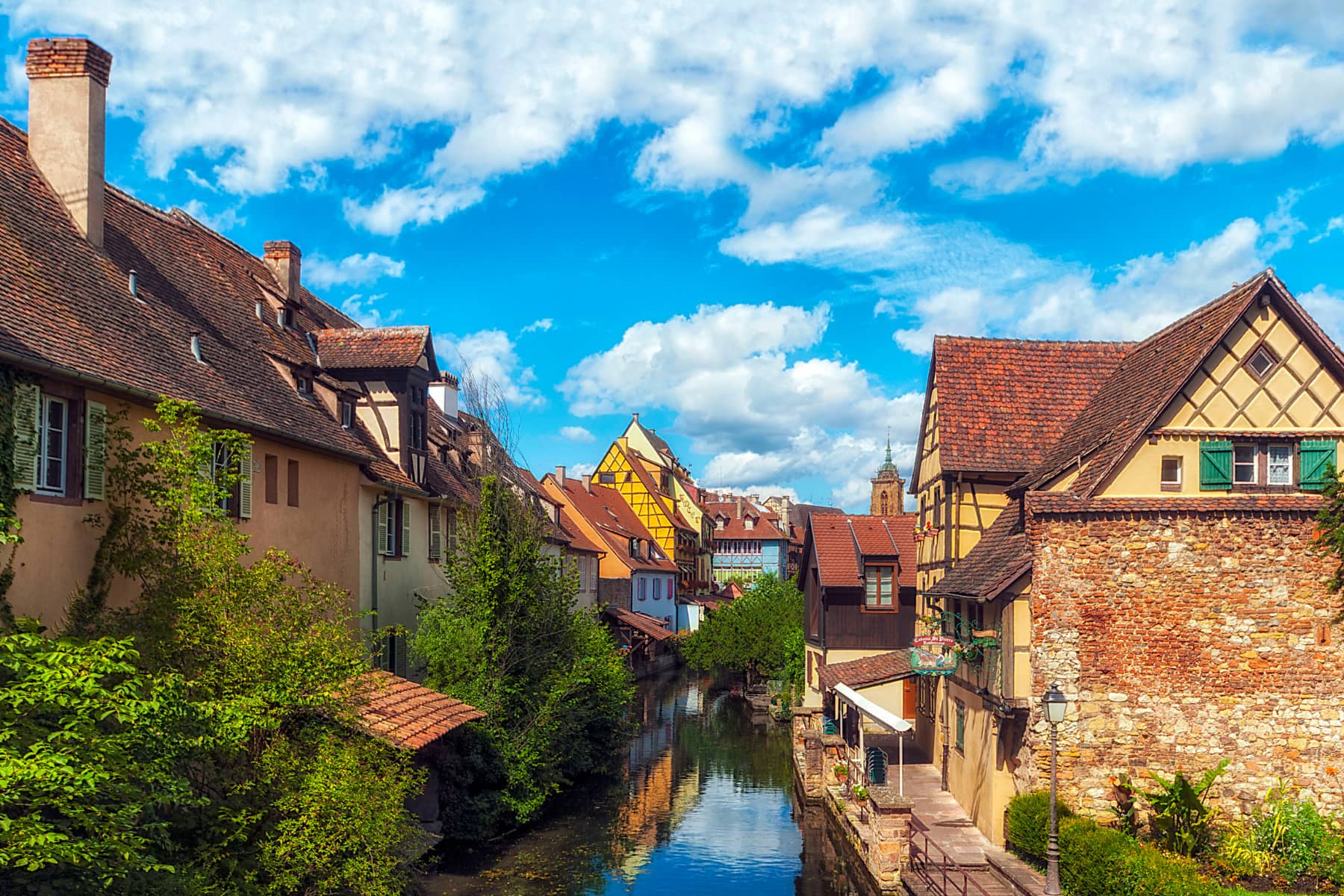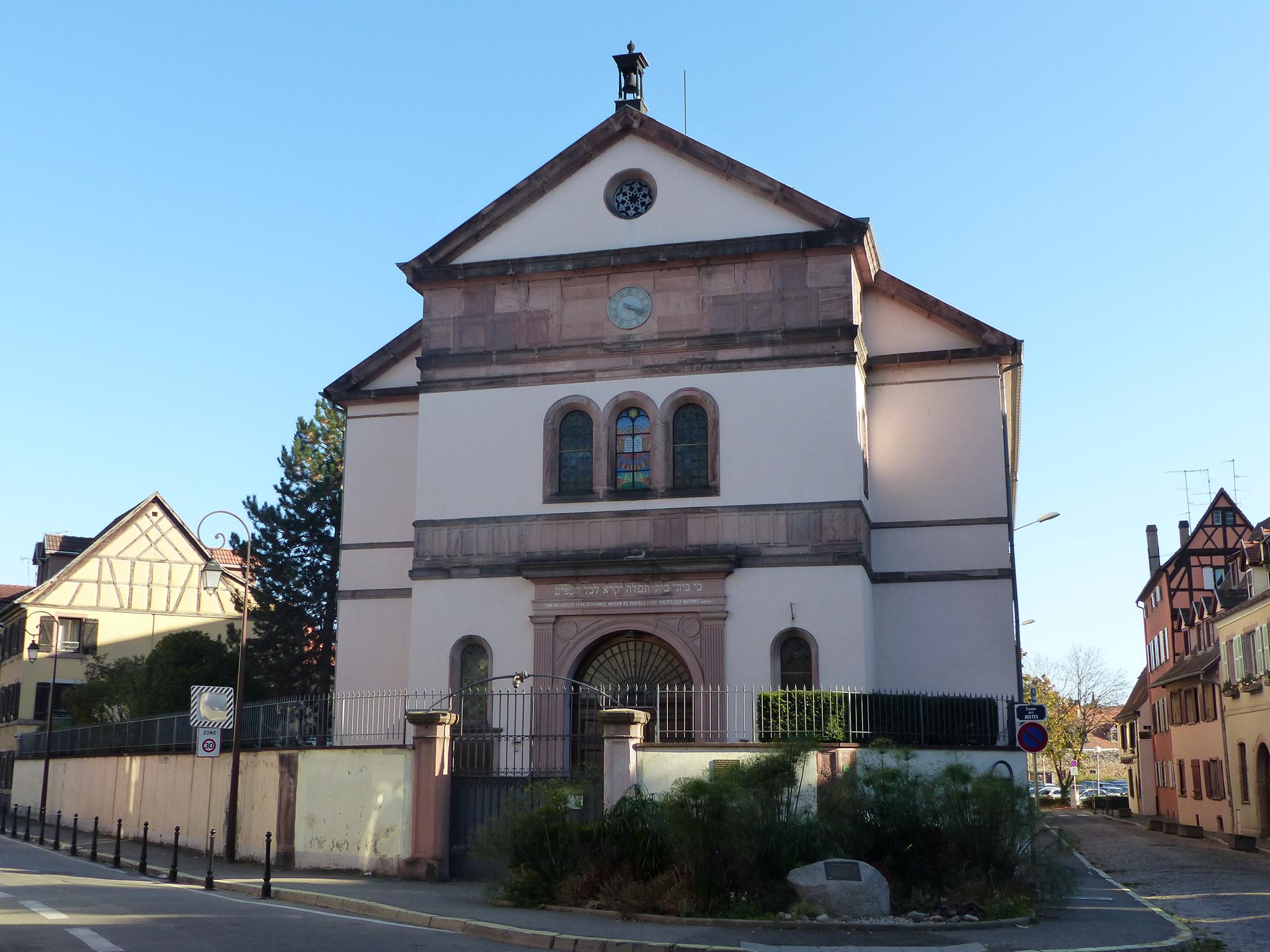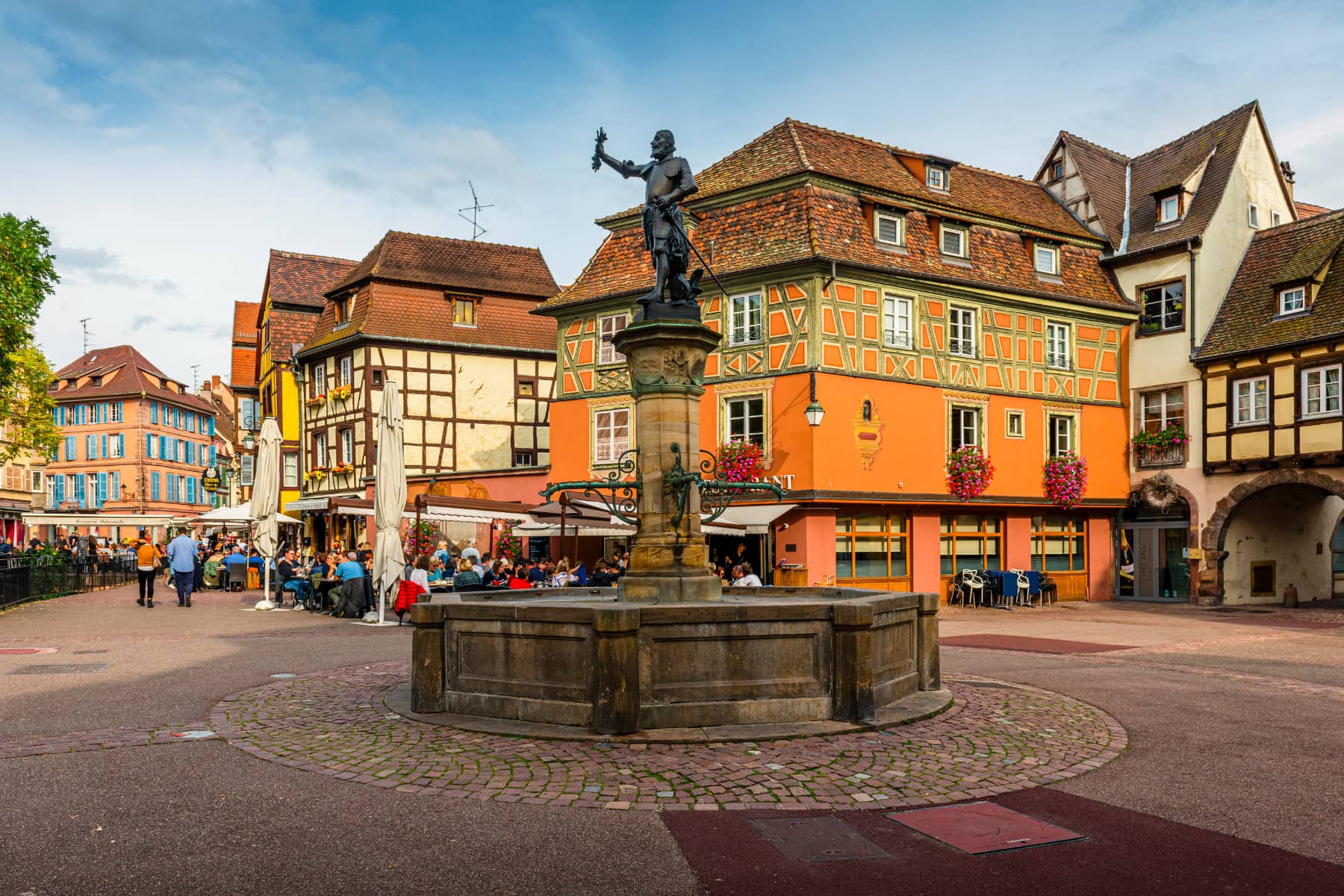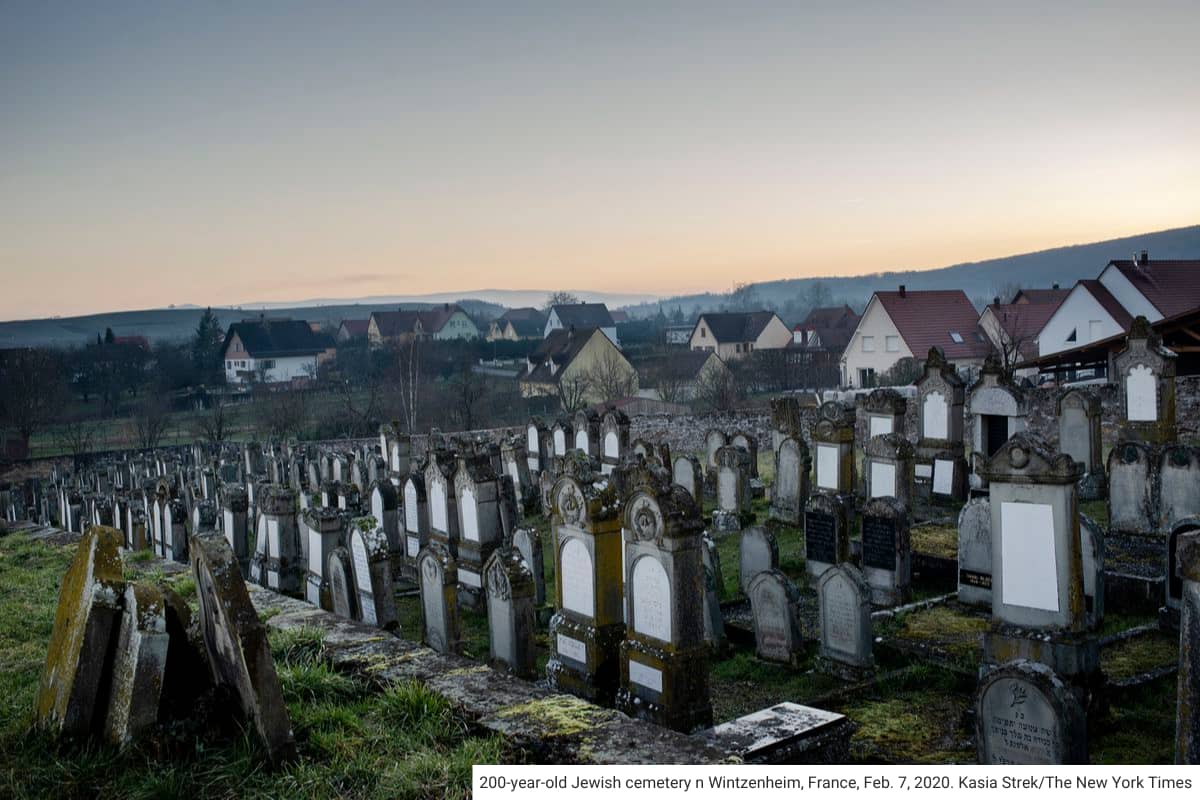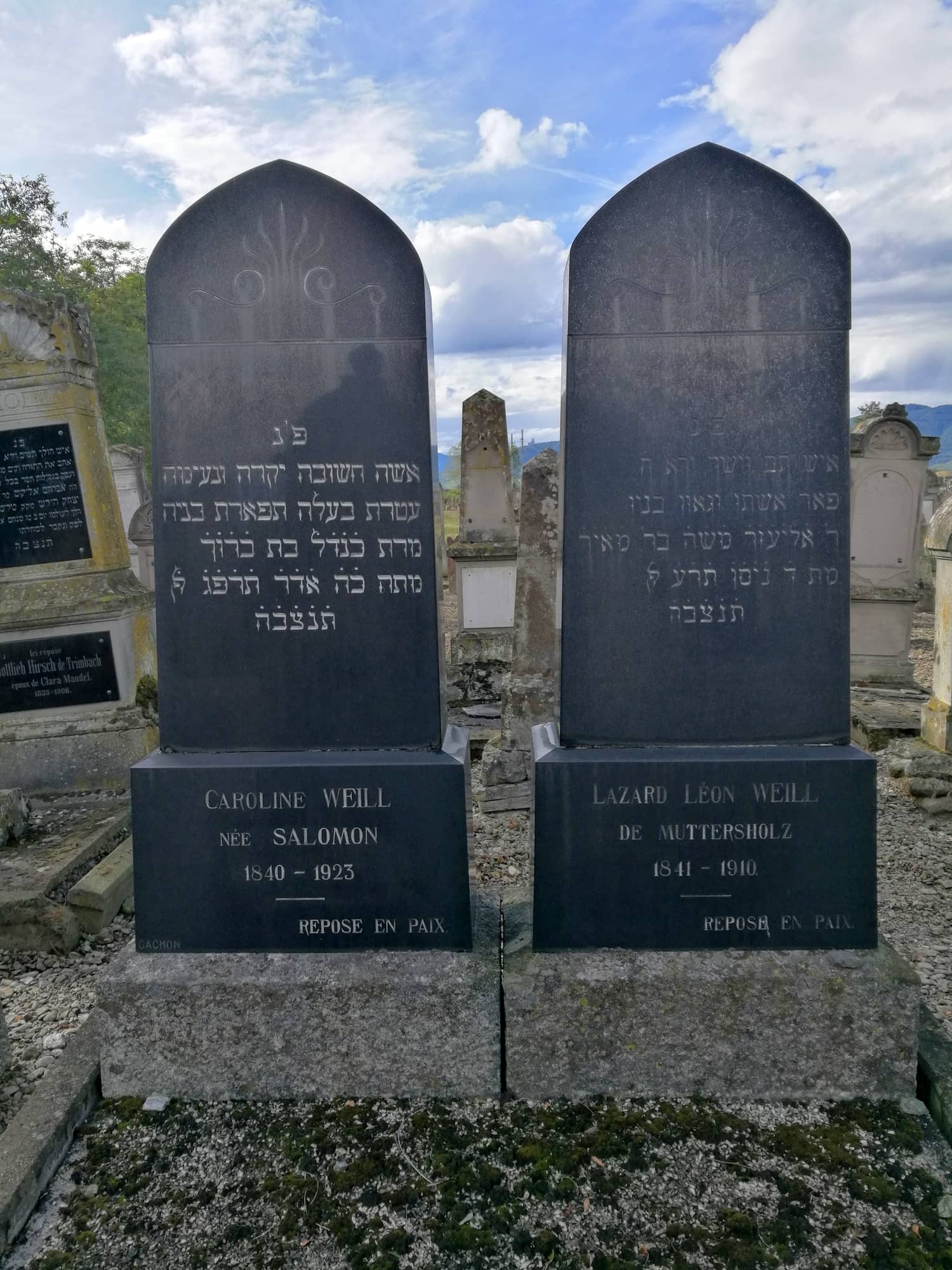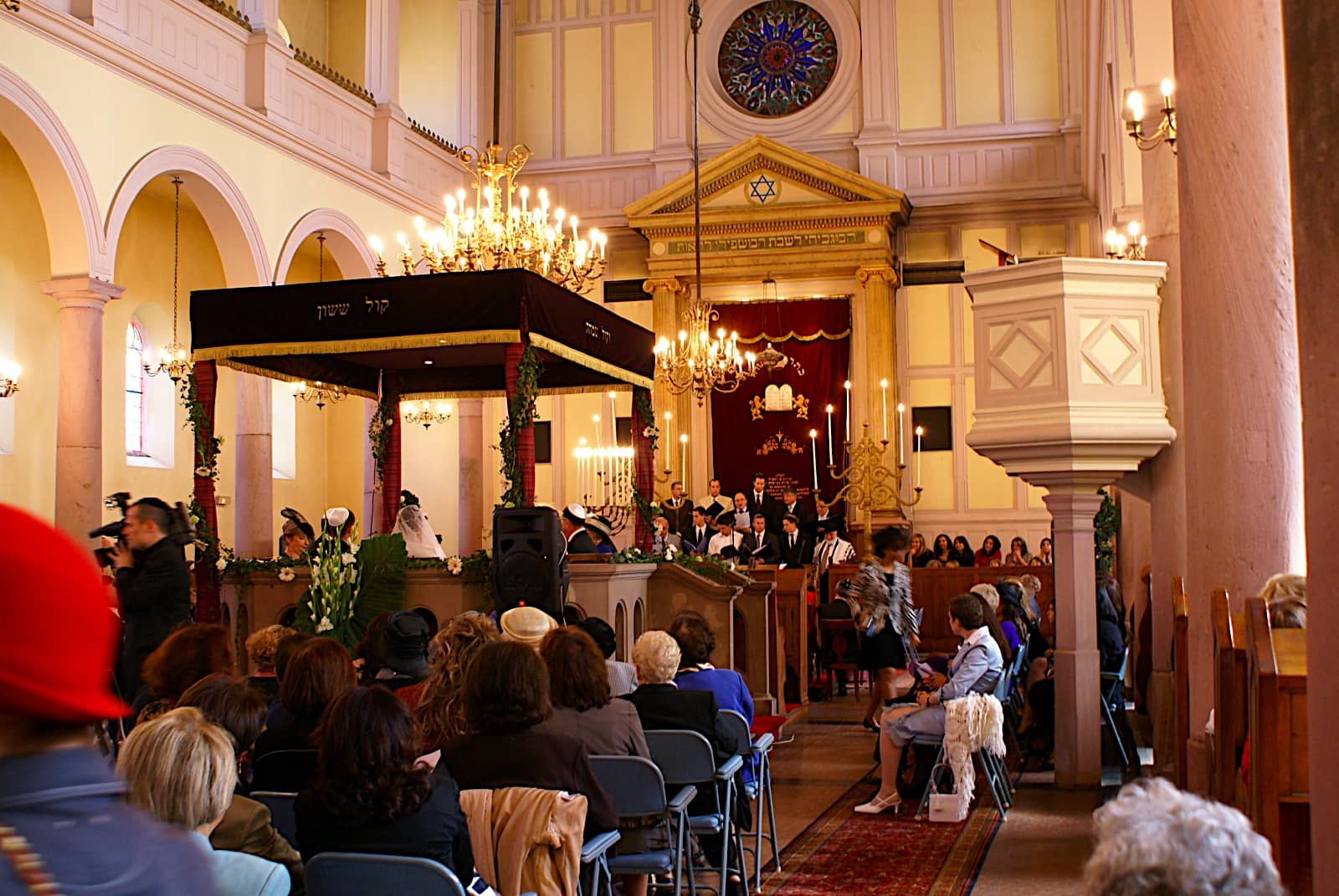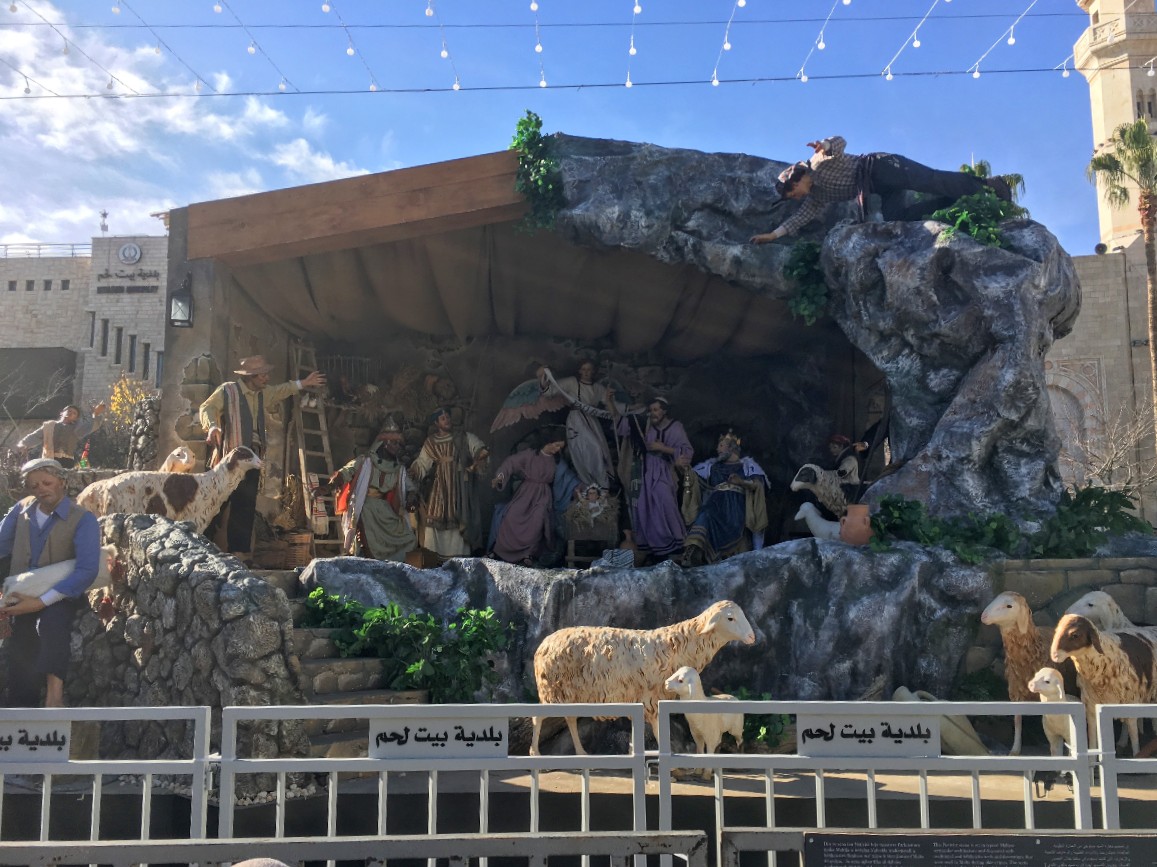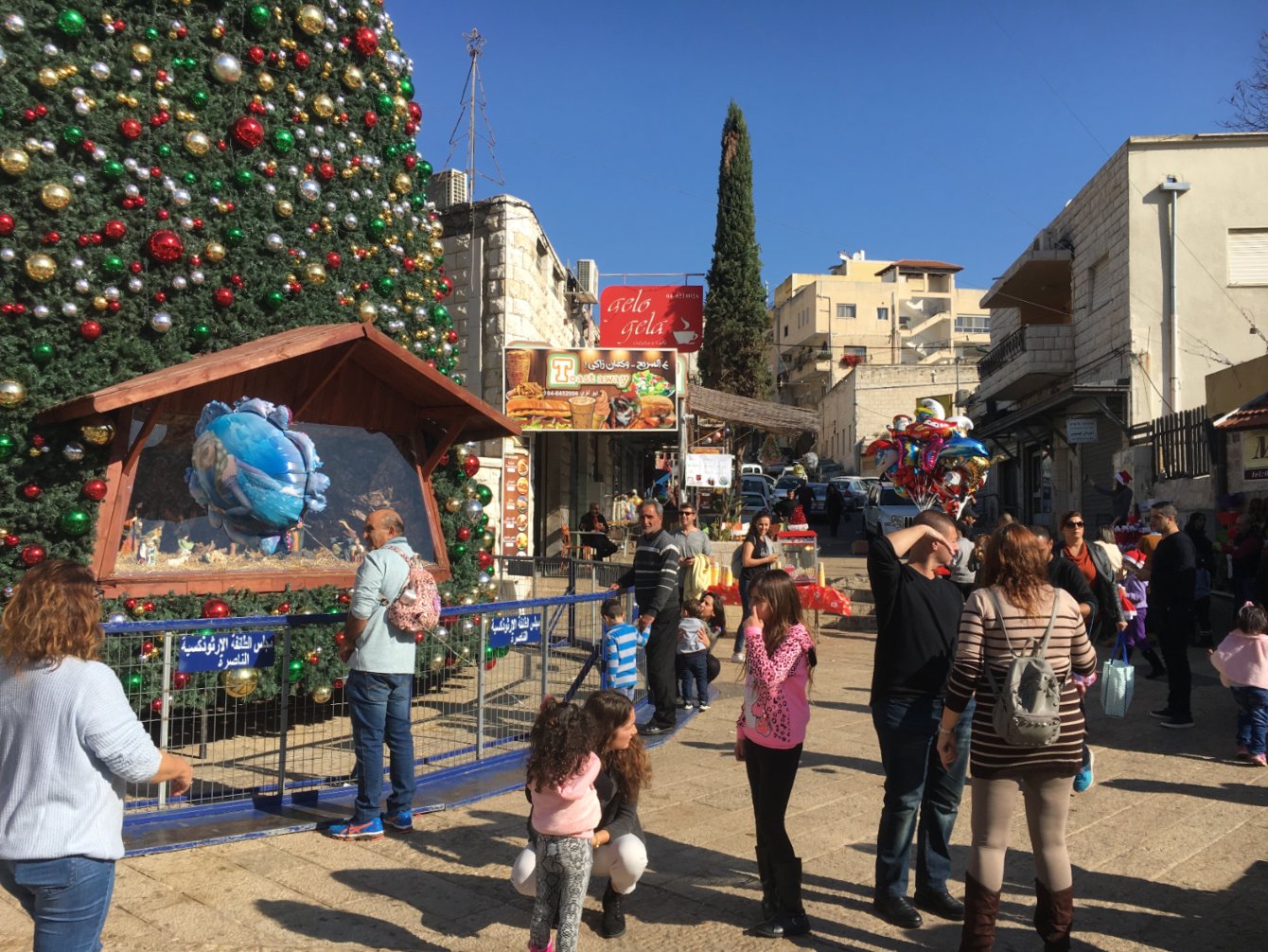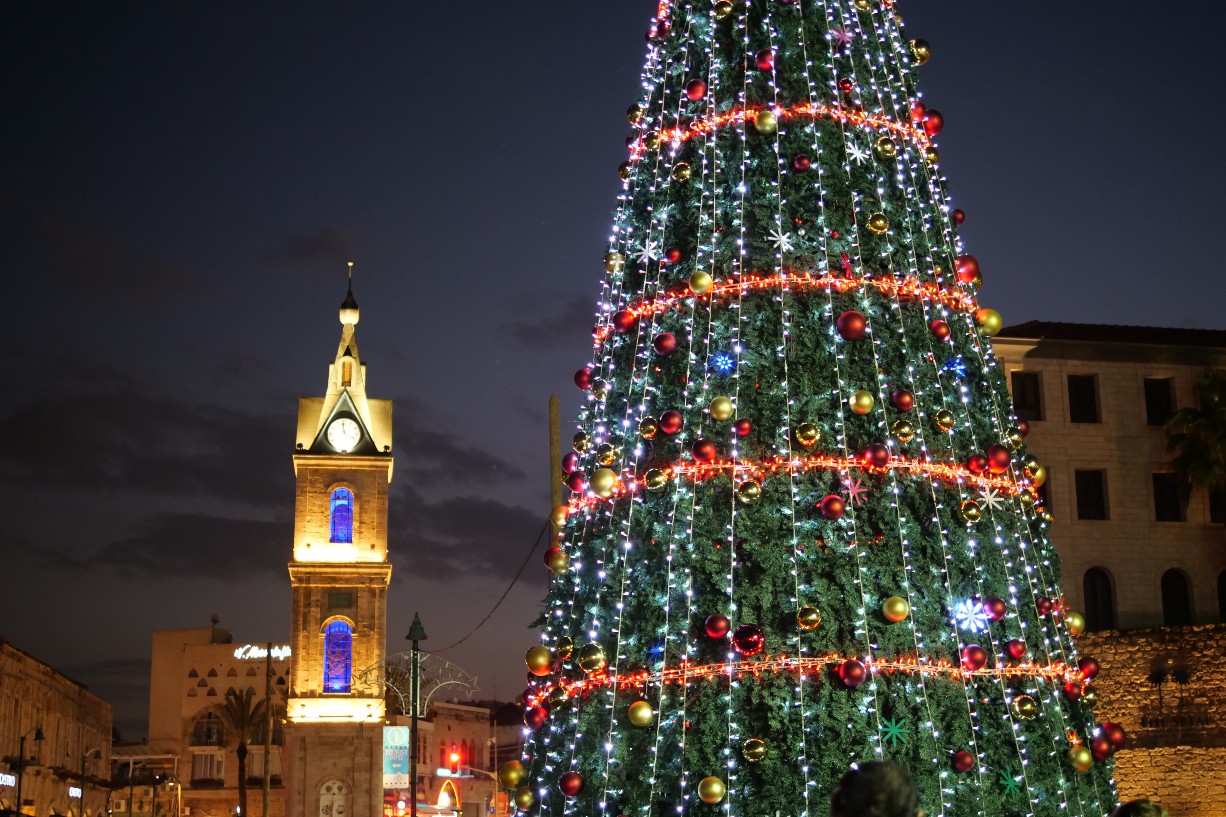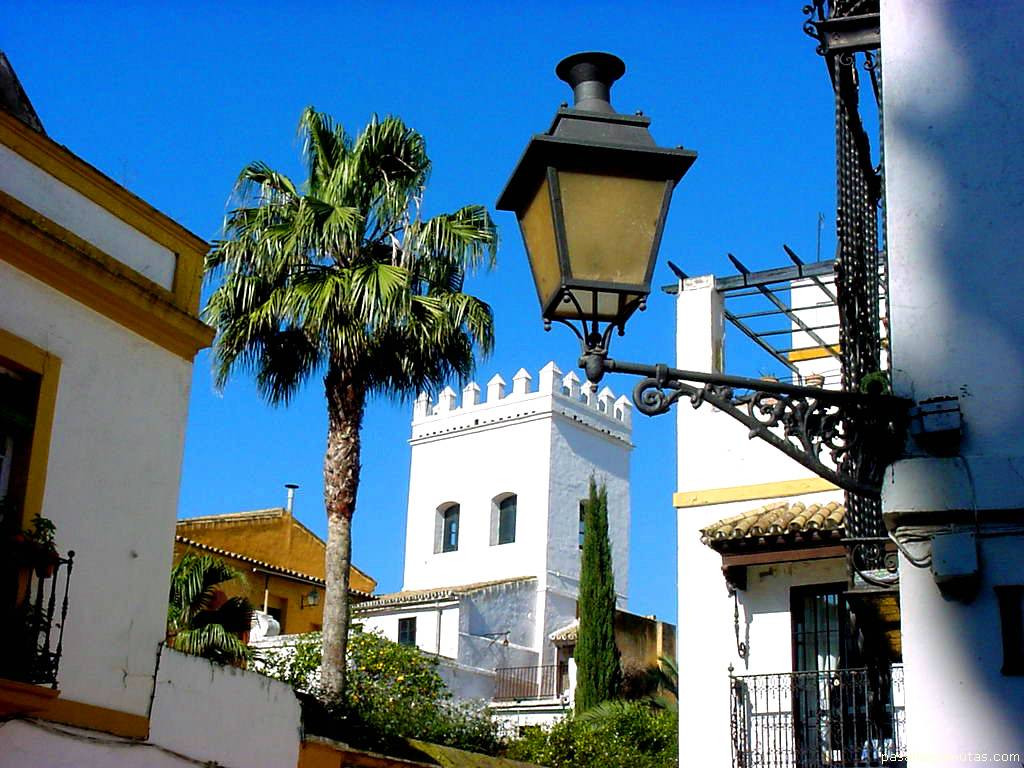In 1622, when no Jewish family lived in Sélestat, the Jews of the communities or Wintzenheim, Ribeauvillé and Bergheim no longer had any necropolis near Colmar, the city councilors refusing the extension. Also these Jews bought land around Sélestat, in the canton known as Burner, which later took the name of Paradiesweg to establish a rest area. The cemetery (named the “Paradies”), with an area of nearly 4 hectares and comprising around 4000 graves, was created around 1622.
The oldest part has been listed as an historic monument since May 10, 1995. Located to the north of the city, it was opened by the Jewish communities of Bergheim, Ribeauvillé, and Dambach-la-Ville, then enlarged several times over the centuries, in 1699, 1719, 1733 respectively. the limits: one of them bears the inscription “Bel Ain”, which means house of eternity.
In the last century, a fence wall pierced with two doors was installed; on the central portal, we can see two broken poppy branches: the poppy symbolizing sleep, and the broken branches death.
The oldest identified stele is that of Rabbi Moïse de Dambach, dating from 1666. Many Jewish personalities of the 17th century rest in this cemetery, in particular the niece of Karl Marx, Rose Blum, as well as Raisel See, heroine of the French Revolution. native of Bergheim, as well as Moïse Meier, president and general representative of the Jews of the province.
There is also the tomb of Léopold Weiller, father of Lazare Weiller, who was one of the founders of television, and of the first automobile cab company (the ancestor of taxis). He was a senator for Bas-Rhin.
This cemetery makes it possible to observe over a continuous series of changes in Jewish funerary art in the 18th century mainly, through the decorative treatment of the stelae which evolves from a fairly stripped Renaissance style to a more baroque art around the middle of the century. (Dictionary of Historical Monuments Alsace – sept. 1995)
During the Nazi Occupation, the cemetery passed into the hands of the authorities. It is the mayor, who, in 1979, ceded for the symbolic franc, the cemetery to the Jewish community.
Photo credit: Oie blanche, CC BY-SA 3.0 <https://creativecommons.org/licenses/by-sa/3.0>, via Wikimedia Commons
